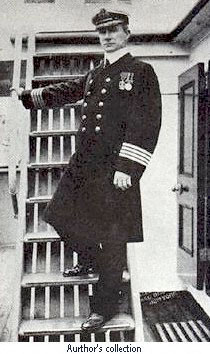The Man Who Answered Titanic's Call
/Captain Arthur Rostron had lived at sea since his teen years, working his way up the ranks on various ships until he was eventually made captain. In 1905, he took command of the Carpathia, one of the many ships crossing the Atlantic from England to New York and back. On April 11, 1912, Carpathia left New York with 125 first class passengers, 65 second class, and 550 third class passengers.
Captain Arthur H. Rostron
Rostron was asleep when the ship’s wireless operator burst in on the night of April 14 with the news of Titanic’s distress signals. Captain Rostron took action immediately. He ordered the Carpathia to set a course for Titanic’s last known location, a distance of 60 miles. He ordered extra stokers to increase the amount of steam needed to push the ship to its maximum speed. He reduced the heating system so that enough steam would be diverted to the engines. Increasing the speed was a great risk, however, due to the number of icebergs in the area.
A devout Christian, Captain Rostron was seen walking to a private area of the ship where he remained for some time with his head bowed in prayer. He then ordered the Carpathia's lifeboats to be readied, requested passengers and crew to bring extra blankets and pillows to the public rooms, worked with the ship's doctors to set up areas to care for the injured, and did everything he could think of to reach the Titanic quickly and prepare for whatever its survivors might need. Out of several ships receiving distress calls from Titanic, only the Carpathia came to her rescue.
At 4:00 am, after making its way through the treacherous ice fields, the Carpathia reached the first of Titanic’s lifeboats. The rescue operation took several hours, until 712 people were brought aboard the Carpathia using makeshift rope swings and ladders. Knowing the ship would not have enough provisions to care for so many until it reached Europe, Rostron set a course for New York.
Titanic passengers aboard the Carpathia
He was awarded the Congressional Medal of Honor by President Taft and went on to command the best ships of the Cunard line including the Maritania and Lusitania. He was named commander of the Order of the British Empire in 1919 and knighted in 1926. He retired from the sea in 1931 and told his story in “Home From the Sea.” He died in 1940 and is buried beside his wife, Ethel, in Southampton, England.


